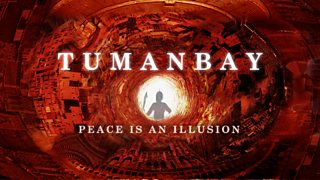Who were the Mamluks?
Rebellions, plagues and mysterious forces hide behind every corner of Tumanbay, a world inspired by the Mamluks. But, what do we know about the great civilisation that ruled Egypt from the 13th to the 16th century?

Nearly everyone started out as a slave
The Mamluks believed in using talent wherever they found it and slaves, sold in the markets of the great cities, could rise through the ranks of the army, the civil service, the arts and sciences, or trade to positions of wealth and power.
They were nearly wiped out by the plague
In 1347 slave traders from the Black Sea brought with them something far deadlier than a cargo of future Mamluk warriors: the Black Death. Plague infested the whole of the known world, but nowhere was it fiercer than in Cairo. Over two years it wiped out an estimated one-third of the population.

Saved by publicly funded hospitals
The cost of the plague might have been even higher had Cairo not had dozens of hospitals, maintained at the public expense and by grants from the wealthy. There were separate wards for men and women, asylums for the mentally ill and ‘rest homes’ for the recovering and weak.
Bankers offered mortgages to house buyers and there was even an efficient postal service.
If you were a doctor, you could be sued
Anticipating our modern world, there were ambulance chasing lawyers happy to sue doctors who didn’t deliver all the patient expected. The doctors, highly skilled and prized throughout the Mediterranean, responded by introducing contracts to be signed before treatment.
Mamluk mortgages
When hospital treatment wasn’t free it could be paid for in instalments, as could a variety of other goods including slaves. Bankers offered mortgages to house buyers and there was even an efficient postal service.
Camels had to pass on the left
In the bustling cities there were problems with pollution, traffic (camels had to pass on the left, but the streets were frequently too narrow to allow this) and combustible loads like wood and straw were banned from built up areas. Zoning officials frequently had to demolish properties which were built beyond the designated boundary lines.

Instead of dolls, they played with live babies
In Islam the representation of a living being is forbidden, so there were no dolls or stuffed toys for the princesses of the palace. Instead, they played with live babies. The young princesses would comb and plait their hair and dress them in clothing they had sewn themselves. They would teach them about cleanliness and deportment, and in spite of being children themselves, would play mother to the little girls, giving them their first lessons. If they survived this upbringing, slave girls often became ladies in waiting or went on to marry into notable families.
Ruthless and filthy rich
The Mamluk empire was at the apex of its power in the 14th century under Sultan al-Nasir Muhammad ibn Qalawun. He ruled for 41 years, a record never surpassed by any Mamluk sovereign. Cairo was one of the wealthiest cities in the world – Christian Europe sent merchants to the Mamluk capital, which reaped huge profits from being the gateway to the Orient. When al-Nasir died his fourteen sons were the wealthiest fourteen individuals on the planet.
They often found themselves at a disadvantage because they would not use unchivalrous tactics against their enemies.
Too chivalrous for their own good
Mamluk soldiers developed a code of chivalry similar to that of the knights of the Western world and, as the Empire declined and the power of Ottoman Turkey grew, they often found themselves at a disadvantage because they would not use unchivalrous tactics against their enemies.
Outfought by the Ottomans
In 1516 Sultan al-Ghuri, whose passions were perfume and flowers, led his army out of the city to fight the Ottoman Turks who were commanded by the brutal sultan Selim I “The Grim” but the Mamluks had not had to fight in earnest for eighty years and their chivalrous tactics were no match for the ruthless Ottomans. It was to signal the end of the Mamluk dynasty and the rise of the Ottomans as the dominant force in the Middle East.
Discover more
-
![]()
Tumanbay: Peace is an illusion
Watch a preview of the epic ten-part drama inspired by the Mamluk slave dynasty of Egypt.
-
![]()
In Our Time: The Mamluks
Melvyn Bragg and his guests discuss the Mamluks, medieval rulers of Egypt and Syria.
-
![]()
Gregor tries to root out the spies in Tumanbay
The Palace Guard questions Shajar's maid. Unfortunately, she has just poisoned herself…
-
![]()
A ship approaches Tumanbay, but all is not as it appears…
Slave trader Ibn waits at the harbour as a ship carrying his wife and daughter arrives.




